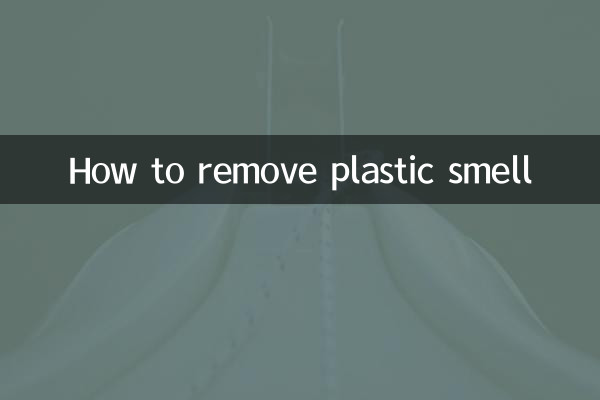How to remove plastic smell
Plastic products are ubiquitous in daily life, but newly purchased plastic products are often accompanied by a pungent smell. This smell is not only uncomfortable, but may also cause potential harm to human health. This article will combine the hot topics and hot content on the Internet in the past 10 days to sort out effective plastic smell removal methods for you, and provide structured data for reference.
1. The origin of plastic smell

The plastic smell mainly comes from chemicals such as plasticizers and stabilizers added during the production process. Here are common types of plastic and the harmful substances they may release:
| plastic type | Common uses | Possible release of harmful substances |
|---|---|---|
| PVC (polyvinyl chloride) | Water pipes, plastic wrap, toys | Phthalates (Plasticizers) |
| PP (polypropylene) | Food containers, tableware | low molecular weight organic matter |
| PS (polystyrene) | Foam boxes, disposable tableware | Styrene monomer |
2. Practical methods to remove plastic smell
Based on the hotly discussed methods of removing plastic smell all over the Internet, we have compiled the following efficient and safe solutions:
| method | Operation steps | Applicable plastic types | Effect duration |
|---|---|---|---|
| Ventilation and drying method | Place plastic products in a ventilated place to dry for 3-5 days | all plastic | permanent |
| Baking soda cleaning method | Soak plastic items in a solution of warm water and baking soda for 2 hours | food grade plastic | 1-2 weeks |
| Activated carbon adsorption method | Store the activated carbon package sealed with plastic products for 24 hours | airtight container | 2-3 weeks |
| White vinegar soaking method | Soak plastic items in dilute white vinegar solution for 1 hour | Acid-resistant plastic | 1-2 weeks |
| Coffee grounds deodorization method | Place dry coffee grounds into a plastic container and seal for 24 hours | food container | 3-5 days |
3. Innovative methods in hot topics
Some innovative deodorization methods that have been hotly discussed on the Internet recently are also worthy of attention:
1.UV disinfection method: Use UV ultraviolet lamp to irradiate the surface of plastic products for 15-20 minutes to decompose some organic compounds. This method has received particular attention in the field of sterilization of maternal and infant products.
2.Tea fumigation method: Put the brewed tea leaves into a closed space together with plastic products, and use the adsorption and aroma masking effects of the tea leaves to double deodorize. This is a life hack that has been popular on Xiaohongshu recently.
3.Refrigeration deodorization method: Place the plastic container in the refrigerator for 24 hours. Low temperature can slow down the evaporation of organic matter. Some users on Weibo actually tested this method to have a significant effect on newly purchased plastic lunch boxes.
4. Recommendations for safe use of plastic products
Based on recent data released by consumer protection organizations, we have compiled the following safe usage recommendations:
| Suggested content | scientific basis | Difficulty of implementation |
|---|---|---|
| Avoid using plastic products at high temperatures | High temperature accelerates the release of harmful substances | simple |
| Choose food grade plastic marking products | Comply with national safety standards | medium |
| Regularly replace aging plastic products | Release increases after aging | simple |
| Prefer glass or stainless steel alternatives | Safer and more environmentally friendly | medium |
5. Expert opinions
Professor Wang, an expert from the China Plastics Association, pointed out in a recent interview: "The removal of plastic smell is essentially a process of accelerating volatilization, and the safest way is to maintain ventilation. It is not recommended to use chemical solvents for forced removal, which may cause secondary pollution."
Ms. Li, the person in charge of the environmental organization "Green Action" reminded: "When purchasing plastic products, you should pay attention to whether there is a 'plasticizer-free' label, especially children's products and food contact materials."
Conclusion
There are many ways to remove the smell of plastic, and choosing the right method depends on the type of plastic and the usage scenario. Through the structured data and popular methods compiled in this article, we hope to help you effectively solve the problem of plastic odor and create a healthier living environment. Remember, prevention is better than cure, and choosing high-quality plastic products is the fundamental solution.

check the details

check the details